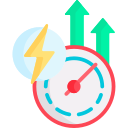Chosen Theme: Balancing Work and Life in a Remote Setting
Welcome to a practical, human guide to finding your remote rhythm. Today’s focus is balancing work and life in a remote setting—so you can protect your time, nourish your energy, and enjoy both productivity and presence.

Clear Boundaries, Calmer Days
Time-Box the Day with Intent
Block your calendar for focused work, admin, breaks, and recovery. Name each block by outcome, not activity, to keep priorities crisp. Protect at least one untouchable hour for deep work and one for true rest.
Create a Digital Door You Can Close
Use separate browser profiles, work accounts, and focus modes to define when you are in office. At the day’s end, sign out, switch profiles, and silence badges—signal closure to your brain and your team.
Non‑Negotiable Breaks that Actually Happen
Schedule breaks as meetings with yourself. Step away from screens, stretch, breathe, hydrate. Treat these blocks as essential maintenance, not luxuries. Tell your team you’re modeling sustainable pace and invite them to join.

Physical Boundaries, Even in Small Spaces
Use a folding screen, rug, or moveable shelf to define a work zone. A dedicated chair or lamp can become a powerful context cue. When you pack it up, your brain gets permission to rest.
Ergonomics that Prevent Energy Leaks
A supportive chair, eye‑level screen, and external keyboard reduce strain that steals attention. Adjust lighting to reduce glare, keep feet grounded, and stand briefly every hour. Your back and mood will thank you.
Sensory Signals for Start and Finish
Light a specific candle to start, play a short instrumental track, or open the window for fresh air. Use a different scent or playlist when closing. These consistent cues quickly train faster context switching.
Manage Energy, Not Just Time
01
Ride 90‑Minute Focus Waves
Plan deep work in ninety‑minute arcs, followed by a genuine 10–20 minute recovery. Stand up, look far away, sip water. Protect two such waves daily and watch quality rise while hours shrink.
02
Micro‑Breaks with Macro Benefits
Try box breathing, ten squats, or a balcony glance at the horizon. Small rituals reset the nervous system. Set a timer, not a guilt trip—consistency beats intensity when sustaining long‑term balance.
03
Fuel, Light, and Movement Matter
Keep protein‑forward snacks, hydrate early, and chase morning daylight for circadian stability. Add short movement snacks between meetings. One reader cut afternoon headaches simply by walking outside after lunch daily.
Set Expectations at Home and at Work
Clarify core hours, response times, and meeting norms. Decide which channels are urgent versus asynchronous. Document decisions, revisit monthly, and rotate ownership so everyone feels responsible for sustainable collaboration.




Rituals for Switching On and Off
Pick a three‑step start: water, two minutes of stillness, then planning the top three outcomes. Keep it short and sacred. When days wobble, this anchor returns you to center quickly.


Rituals for Switching On and Off
Close loops by writing tomorrow’s first step, clearing the desk, and logging wins. Saying out loud, “Work is done,” shifts identity. One engineer reported sleeping better after a week of this.
Connection, Well‑Being, and the Human Factor
A Story of Virtual Coworking that Worked
Maya, a product designer, beat isolation by hosting two weekly focus rooms with cameras on mute. They shared goals in chat and celebrated small wins. Her procrastination dipped, and joy returned.


Map Your Support Network
List three peers for work wins, two mentors for stuck moments, and one friend for laughter. Schedule recurring touchpoints. When stress spikes, you won’t need to build support from scratch.
Join our mailing list
